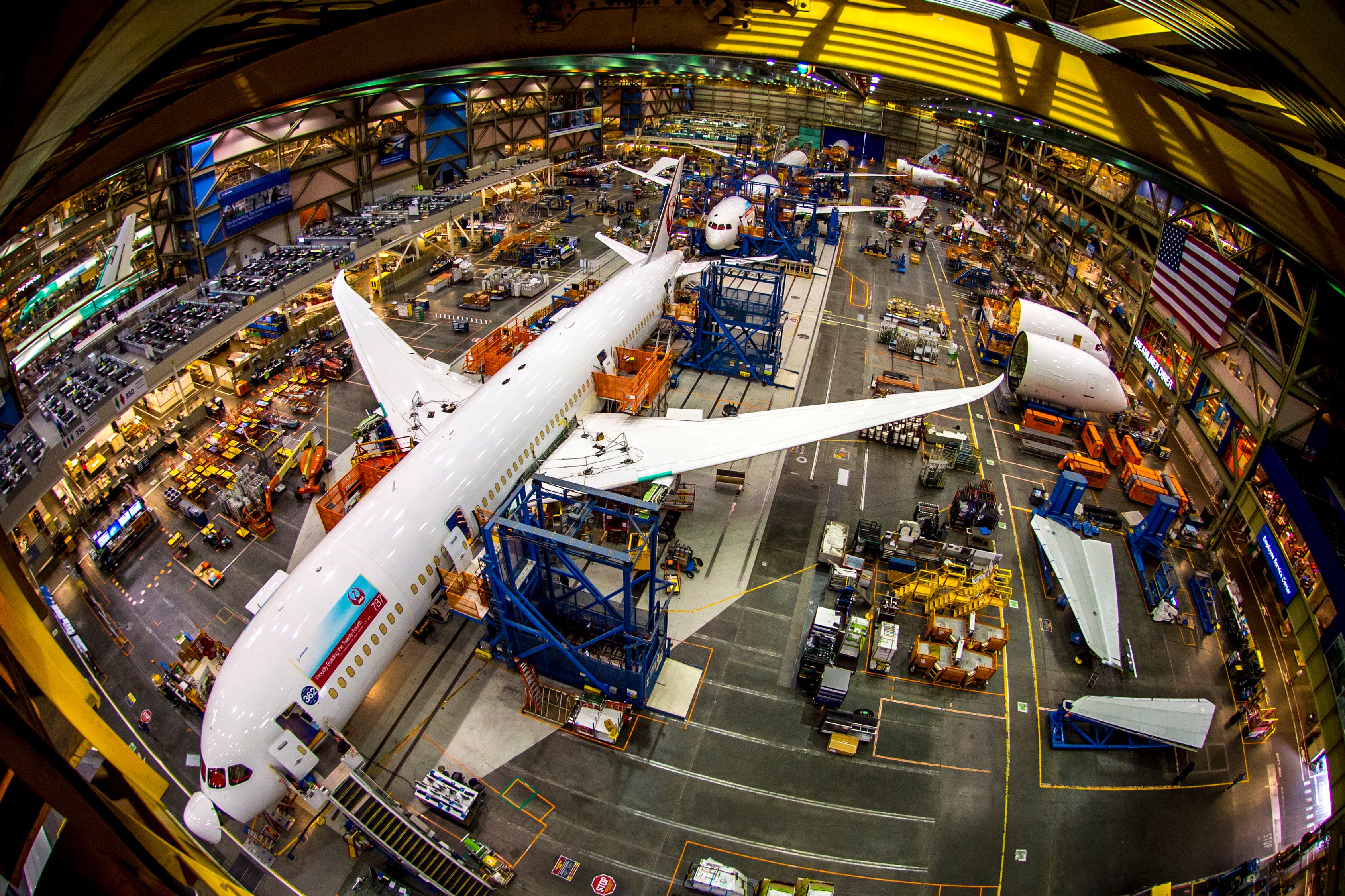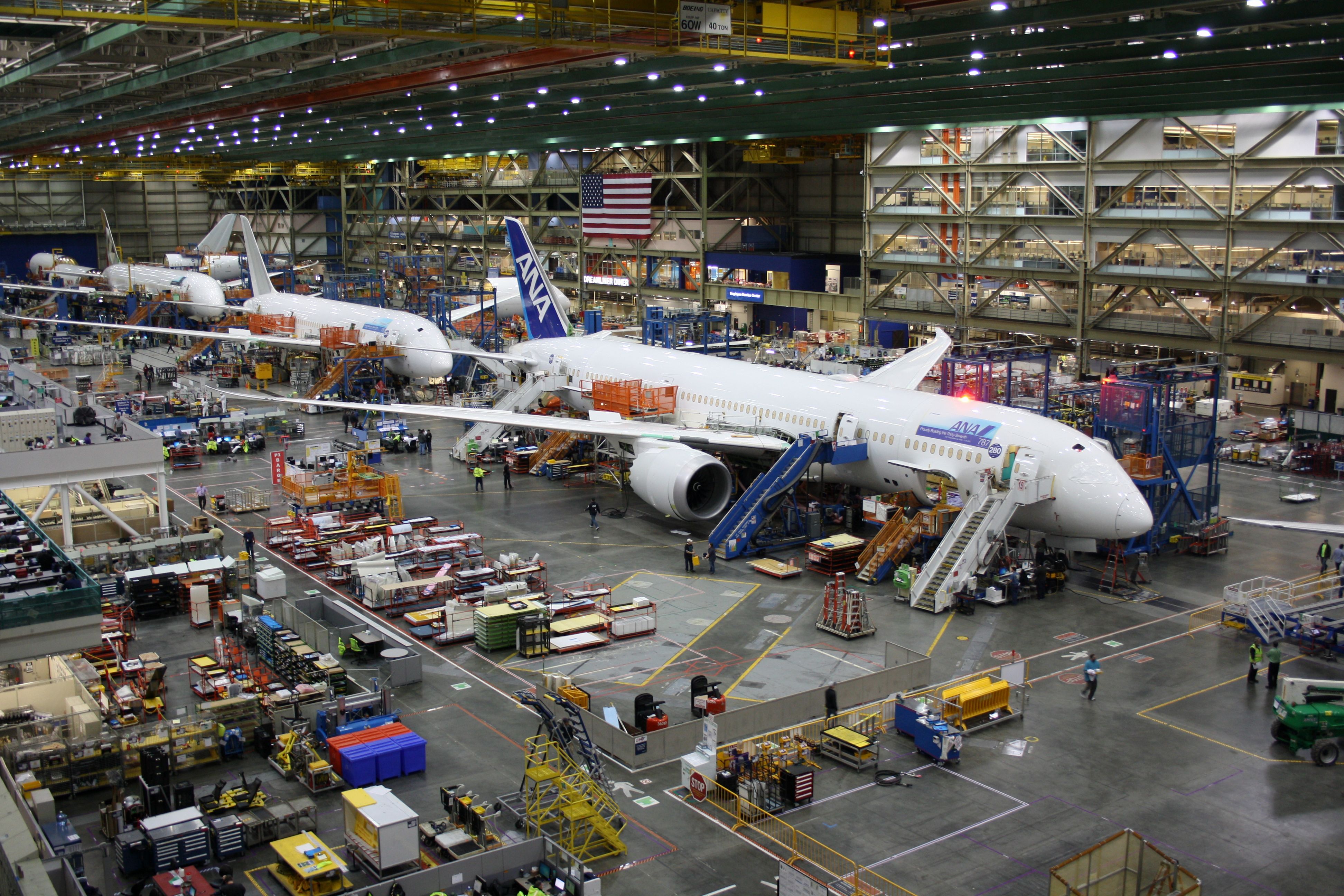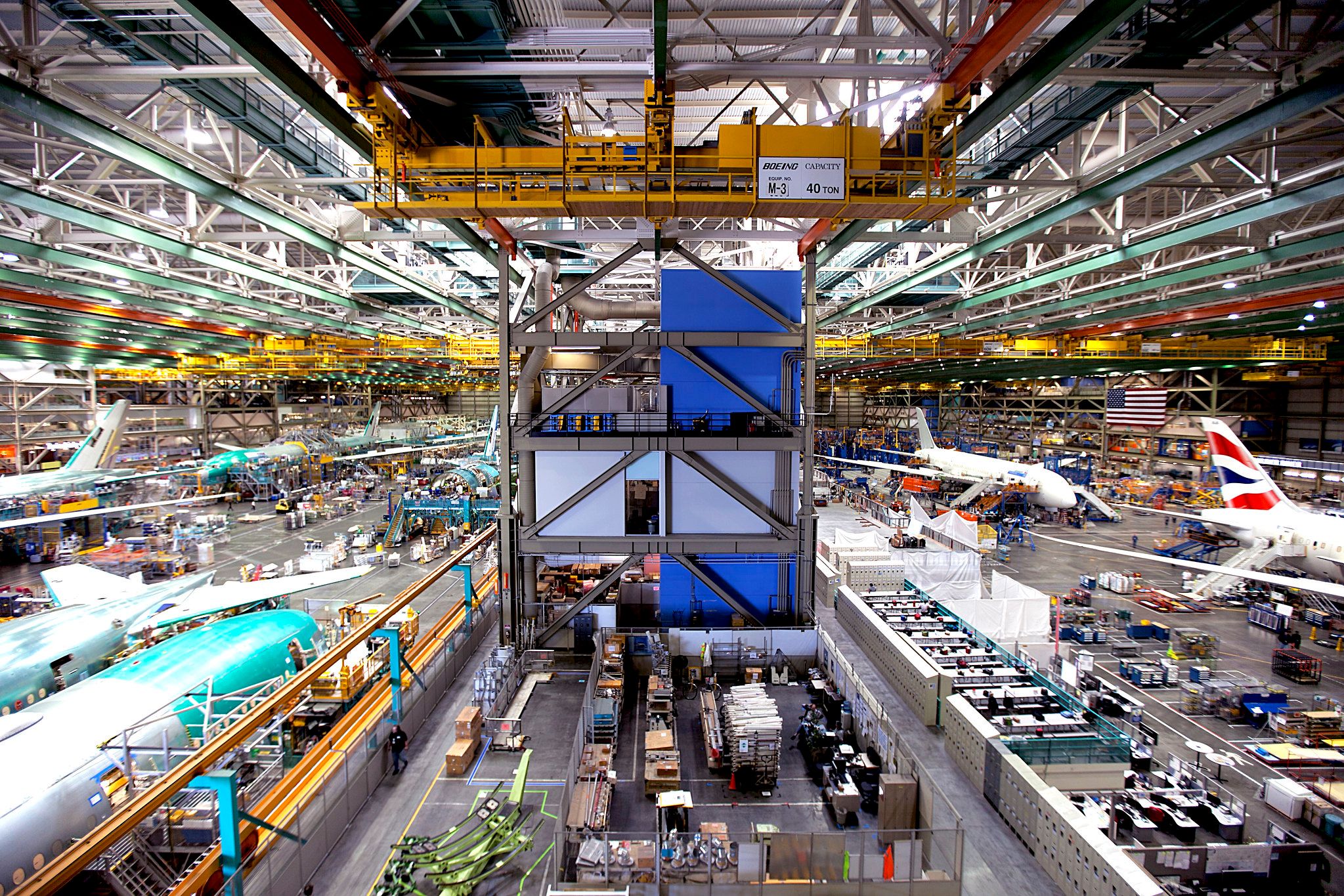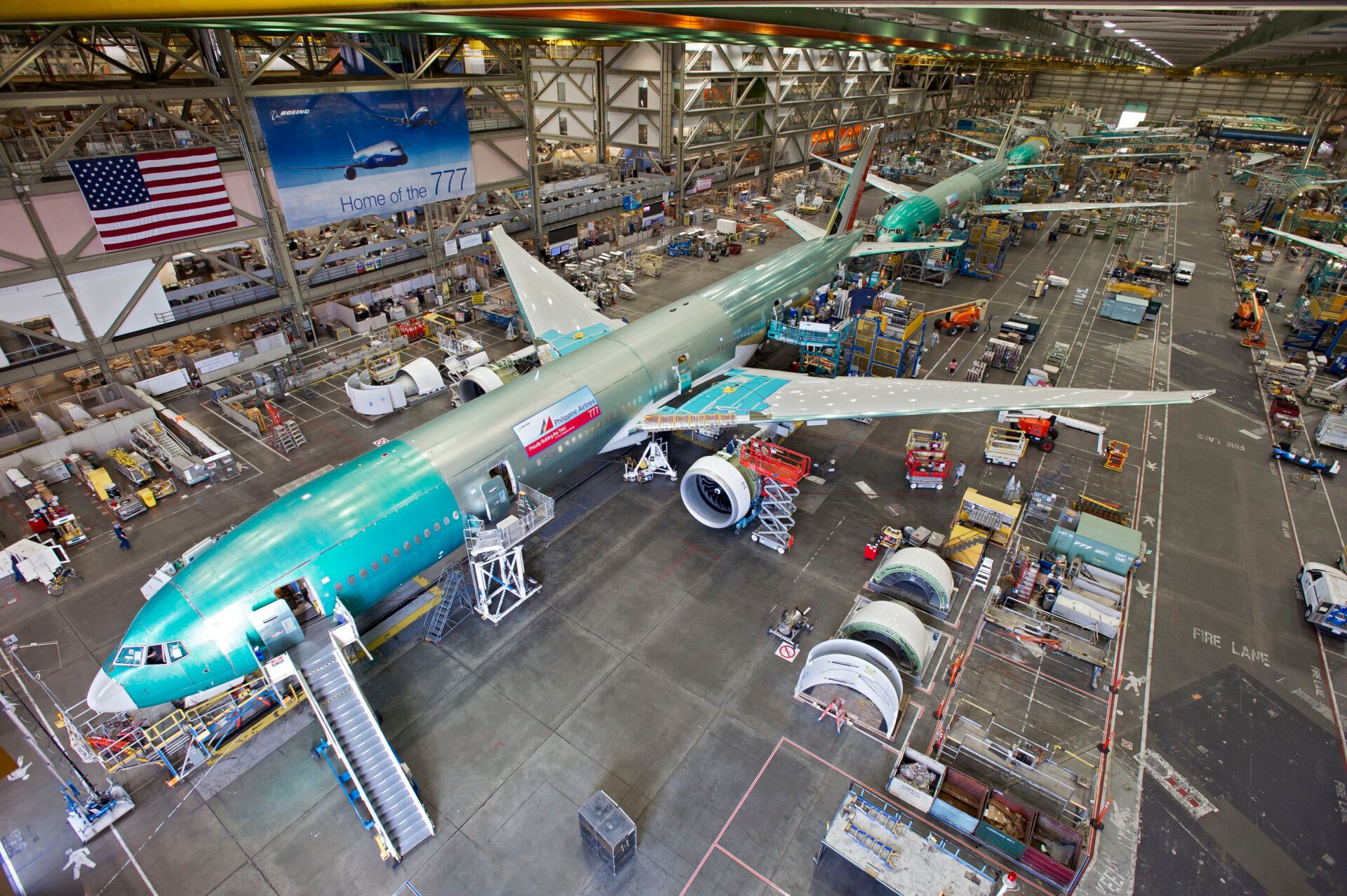Boeing’s smart factories across the globe are embracing numerous advanced manufacturing techniques to strengthen and optimize their production systems. From advanced measurement devices to digital tool tags, Boeing aims to improve work efficiency by employing smart techniques in its aircraft manufacturing and testing processes. Like smart homes, smart factories offer automated equipment, controlled processes, and safer work environments for personnel.
The use of smart technology not only delivers quality products but also ensures the safety of personnel. According to the Vice President of Manufacturing and Safety at Boeing Commercial Airplanes division, Scott Stocker,
"Boeing is embracing multiple advanced manufacturing techniques to strengthen our production systems and deliver on our commitments to product quality and safety."
Smart manufacturing techniques
The manufacturing and fulfillment teams at Boeing use smart tags to search available or misplaced inventory. Moreover, digital tooling applications connected to factory-wide smart tags measure consumption and issue new orders just in time for a replacement. Production and tooling divisions at Boeing ensure that technicians always have tools on hand to work with.
The lost time due to missing tools incurs tremendous time and cost to the company. As such, continuous monitoring of equipment consumption ensures the availability of all equipment when it is needed. Digital applications also prevent the need for spares that take up storage (and floor) space.
Operations Management System
The Boeing Sheffield facility in South Yorkshire, England, is the first to use an operations management system. The state-of-the-art intuitive user interface maximizes operators’ efficiency by providing live machine performance data to the industrial engineering team. Downtime is significantly reduced by scheduling subsequent processes in a continuous production pipeline. According to Stocker,
"Maintaining constant awareness of the manufacturing environment enables our teams to work safely and efficiently and helps us mitigate downtimes and stabilize the production process."
Advanced systems are capable of notifying the teams in charge when attention is needed. For example, a smart tag device connected to the advanced user interface will notify the person responsible if the new order is not fulfilled in time. Smart sensors attached to machines send performance data to the monitoring dashboard.
Operators are able to monitor the dashboard in real-time to avoid any production delays. Lubrication indicators may notify technicians that the machine’s calibration is required. Similarly, environmental sensors constantly survey for variations in temperature, humidity, vibration, and noise. Results from such sensors indicate the health and efficiency of the running system.
Smart user interfaces also predict production bottlenecks well in advance to alert teams about potential delays and corrective actions. While technicians can override almost all automated systems, smart interfaces and corresponding equipment optimize work efficiency.
Boeing’s smart factory allows technicians to obtain aircraft wing measurements without having to climb onto the airplane. Technicians use wireless devices that automatically and accurately perform dimensional analysis of large airframe components. Dimensional measurements and analysis is required at multiple stages during the aircraft assembly.
The Internet of Things (IoT)
The Industrial Internet of Things (IoT) connects physical objects, including manufacturing equipment and tools, to automated control systems. Control systems store, process, and calculate large amounts of data to predict forthcoming processes. The information is fed into the production system to provide normal actions and deviations (if any) in near real-time.
Technicians take advantage of the live system to schedule their day-to-day production targets. With precise information about resources (material, machine, and human), technicians can achieve their daily production targets with little or no deviation. Jonathan Vance, Boeing Associate Technical Fellow who has worked to integrate embedded and wireless electronic systems at Boeing since 2008, commented,
"Through loT connectivity, we get information we can use. The engineering, IT and data analytics teams rely on the loT platform for the connectivity that enables them to collect real-time data and gain insight into manufacturing processes. Connecting hundreds of pieces of automated manufacturing equipment, loT helps inform smarter decisions about equipment use and streamline maintenance activities."
Connectivity across the factory
Bluetooth connectivity and radio-frequency identification (RFID) have significantly improved the efficiency and safety of production processes at Boeing. Within large manufacturing centers, such as Boeing’s commercial airplane assembly line, technicians may work at heights or in confined spaces. A smart application connects an RFID tag on an aircraft livery painter's safety harness to a digital dashboard on the production floor.
The digital tag alerts the individual and the teammates if a disconnected or unsecured harness is detected. The digital dashboard not only identifies the problem but also provides one or more corrective actions to resume safe work. If the corrective action is not performed by the user, the system may enter a safe mode to prevent adverse implications.
According to Jonathan Vance,
"RFID technologies are used in more than 25 Boeing facilities to monitor inventory or to tag any number of production items, including assembly jigs, parts or toolboxes. You can pull up a particular building, get a bird's-eye view of the factory and see exactly where the tagged assets are located, he said. At Boeing South Carolina, teammates are piloting new uses of RFID tags to track the locations of hand tools across the expansive site where the 787 Dreamliner is built."
Digitally enabled tools allow Boeing to drive accuracy, efficiency, and predictability into its manufacturing processes. Since each process depends on the preceding, production stability is crucial for a successful project.
In one of the manufacturing sites in St. Charles, Missouri, floor mechanics use Bluetooth-enabled digital torque wrenches to install fasteners on various guidance kits. Digital wrenches have much tighter tolerances and require fewer recalibrations. The tool also records each measurement and sends the data to the production system. According to Jonathan Vance,
"This added capability enables us to use the digital thread to verify the work systematically and also affects closed-loop control in our manufacturing processes."
These data loops are essential to production quality across Boeing's advanced manufacturing centers, as data threads connect engineering and manufacturing teams and ensure everyone has the information they need in real-time.
What are your thoughts on the smart manufacturing techniques implemented at Boeing’s factories across the globe? Tell us in the comments section.





